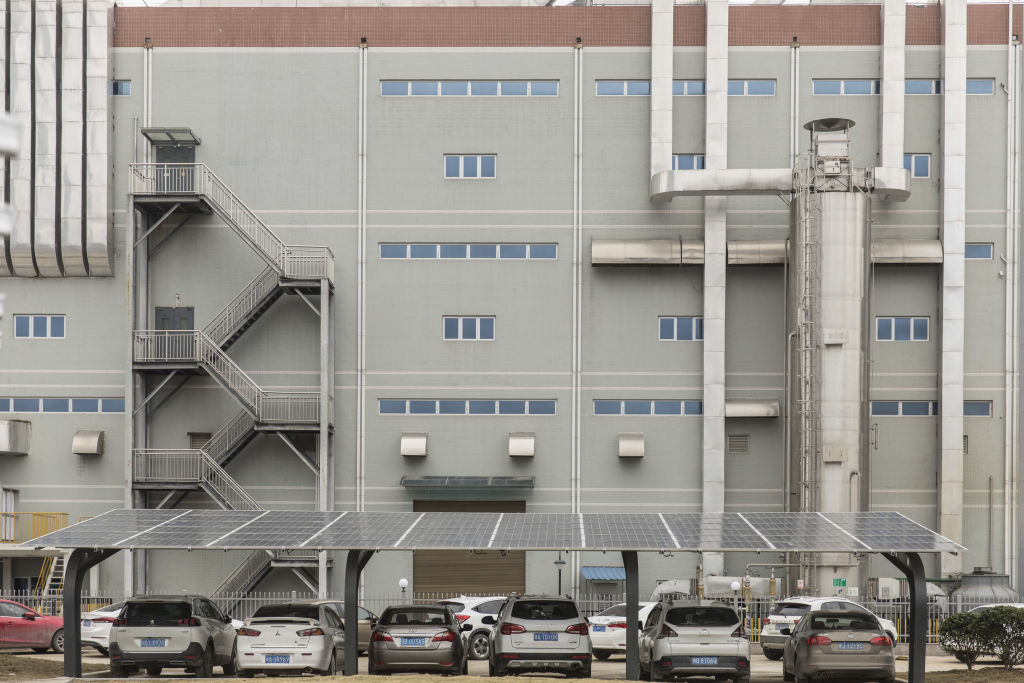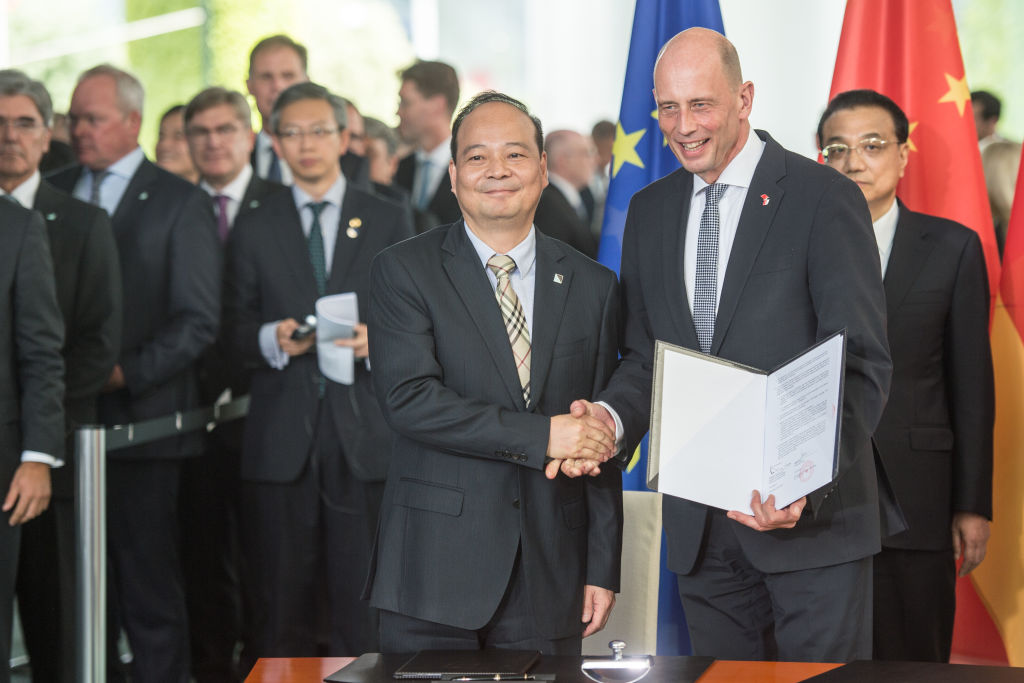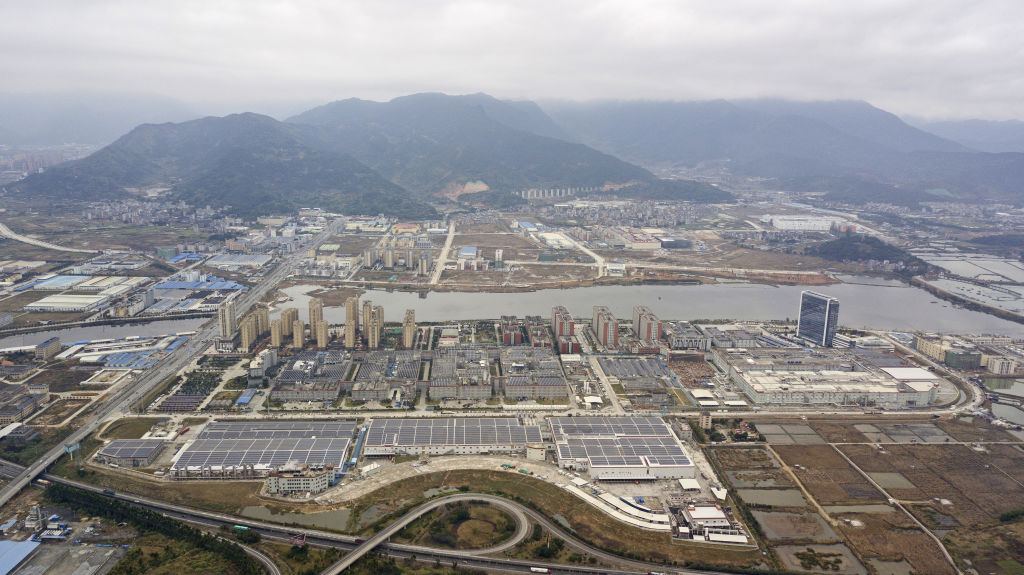
In late 2019, residents of Arnstadt in central Germany awoke to find diggers breaking ground on a new factory on the outskirts of town, on the site of a defunct solar panel manufacturing plant. Stretching nearly 57 acres—around 100 football fields—the $2 billion project was Germany’s first large-scale battery gigafactory with the capacity to pump out enough batteries for hundreds of thousands of electric cars every year.
Germany invented the four-stroke internal-combustion engine in 1876 and its car industry helped power Germany’s post-war Wirtschaftswunder with brands such as BMW, Mercedes-Benz, and Audi becoming symbols of reliability and engineering expertise. But the Arnstadt factory was not being built by a German carmaker. Instead it was being financed and constructed by a little-known Chinese company founded only eight years earlier in China’s mountainous eastern fishing town of Ningde. The company, Contemporary Amperex Technology, or CATL, had already struck deals to supply batteries to Volkswagen and BMW as the auto manufacturers sought to reinvent themselves and move away from internal combustion engines. CATL also had an agreement to supply batteries for Daimler’s electric buses and trucks.
To meet European Union climate change targets, Germany’s carmakers had to reduce their fleetwide carbon emissions starting in 2020 or face the prospect of large fines from Brussels. So, beginning in 2019, ahead of the new policy becoming effective, carmakers like Volkswagen and Mercedes-Benz producer Daimler started announcing bold promises about the number of electric cars they would produce.
Scaling up the production of batteries, the most expensive part of an electric vehicle (EV), is critical to making EVs a mass-market success. Yet, European carmakers had no homegrown battery production or any presence in the broader battery supply chain. Meanwhile, CATL was constructing its factory in Arnstadt, and Tesla was in negotiations to build a gigafactory outside Berlin. German carmakers had no choice but to head to Asia with their cheque books open to buy batteries in bulk and take stakes in Chinese battery companies.
“Our competitors are not based in Ulm or Munster,” says Wolf-Dieter Lukas, state secretary in the German Federal Ministry of Education and Research. “They are based in South Korea and China.” It was a reversal of fortunes for Europe. Germany was used to being a supplier to China of advanced manufacturing, but now China had moved up the value chain. By 2022, CATL was supplying almost every electric carmaker in the world, including Tesla and Ford, giving the company a dominant position in the transition away from fossil fuels.
How did a Chinese company that few people had heard of manage to defeat the German carmakers at their own game?

The headquarters of CATL lie on the edge of Ningde, a stone’s throw from ponds where farmers raise carp. The giant factory is next to a street of cheap noodle restaurants and vehicle repair shops frequented by migrant workers. Inside the factory, battery parts move silently on automated conveyor belts. There are few people—and none of the armies of migrant workers that typified the Chinese boomtown factories of the 2000s. Once an impoverished city with little but tea plantations and mountains, Ningde is well known in China due to President Xi Jinping’s stint as Party secretary in the city from 1988 to 1990. At the time it was a demotion for Xi, who was moved from the busy coastal city of Xiamen to Ningde after his father, Xi Zhongxun, a high-ranking Party member, had refused to support a crackdown on the liberal reformer Hu Yaobang—whose death in 1989 sparked student protests in Tiananmen Square, which resulted in the violent crackdown by the People’s Liberation Army that June.
That same year, a young man called Zeng Yuqun, also known as Robin Zeng, made his way from Fujian to southern China, to the bustling coastal city of Dongguan in southern Guangdong province near Hong Kong, which was embracing capitalism and openness to the world, despite the widespread crackdown on political speech.
For an ambitious young man, moving to Dongguan was like heading to the center of the world, a place becoming connected to global supply chains where workers lived in crowded dormitories and could watch Hong Kong television, which wasn’t censored due to the fact the city was a colony of Britain at the time. In the city, which just a few years earlier had been farmland and rice paddies, foreign investors were being encouraged by the local government to invest in manufacturing enterprises. Dongguan attracted significant Taiwanese, Hong Kong, and foreign investment in factories, and acted as a magnet for Chinese migrant workers. (Dongguan’s population doubled in the 1980s.) It was a frontier town: a world of factories and prostitutes where migrants came on one-way train tickets to make clothes or toys. In the evenings, its streets were flooded with young workers finishing their shifts, full of hopes and dreams.
Zeng found work at a Hong Kong company called SAE Magnetic that made magnetic recording heads for computer hard drives—an industry Dongguan would come to dominate. It was a significant change from Zeng’s childhood. Born into a farming family in the small mountain village of Lankou outside Ningde during the chaos of the Cultural Revolution in 1968, Zeng was naturally intelligent. At the age of 17 he left school to study engineering at Shanghai Jiao Tong University and later received a doctorate in condensed matter physics from the Chinese Academy of Sciences in Beijing. After graduating he joined a state-owned company in Fujian province, where he could have led a comfortable life with an “iron rice bowl,” as working at state-owned companies was known—a job that would have made his parents proud. But the entrepreneurial Zeng was not content to idle away his hours in the sleepy state sector and after just three months left to Dongguan.
Zeng stayed in Dongguan for 10 years, rising to become SAE Magnetic’s only mainland-China-based director. During this period, he also started to learn about batteries and by the end of the 1990s, the CEO of the magnetic hard drive company, Liang Shaokang, had persuaded Zeng to start a battery company.
In 1999, Zeng launched ATL in Hong Kong to make batteries for mobile electronics. It was ideal timing: mobile phone sales were growing and many were connecting to the internet, which required more portable power. The lithium battery boom had begun and Dongguan soon became a hub for producing mobile phones, chargers, and accessories.

When it started, however, ATL had little of its own intellectual property or any breakthrough technology. Zeng and his colleagues spent $1 million buying a lithium polymer patent from Bell Labs in the U.S. But when they returned home, ATL found making the technology work was not as easy as they had thought—the battery expanded when it was repeatedly charged and was also at risk of exploding. As they struggled in Dongguan they worried it might spell the end of the young company. They spent two weeks working overtime to overcome the difficulties by trying different electrolyte combinations. Finally, they got the lithium polymer battery to work. Once they’d done that, they managed to rapidly cut the cost of production—a model Zeng would repeat later with electric car batteries. ATL managed to produce batteries at half the cost compared to its Korean competitors. Their lithium polymer battery was also thinner than other models and could be shaped according to the device. The company was profitable within three months of the battery’s production.
It was the beginning of China’s move into batteries—a business dominated by Japan since Sony commercialized the first lithium-ion battery in 1991. China had come slowly to the battery revolution, with its first lithium battery developed at the Institute of Physics in 1995. By 2000, Japan still accounted for 90% of the world’s annual lithium-ion battery production with 500 million batteries, and China only producing 35 million a year. Yet by 2001, ATL was shipping over one million batteries—used in Bluetooth headsets and portable DVD players. The same year, China joined the World Trade Organization, which opened up the country to significant foreign investment. ATL helped China become a high-value producer of batteries.
In 2011, Zen decided to get into car batteries and launched CATL. By 2017, CATL had overtaken Panasonic as the world’s largest lithium-ion battery producer in terms of sales, managing to lower production costs compared to its Korean and Japanese rivals by increasing the scale of production. German carmakers had no choice but to rely on China to secure their EV batteries.
It wasn’t just Germany though. CATL supplied batteries to a number of Chinese start-ups such as Nio and Xpeng, listed on the U.S. stock exchange, which had started exporting cars to Europe, adding another layer of competition for the Germans. MG, the British car company owned by China’s state-owned SAIC, also sold its ZS EV using CATL batteries in the U.K. And to ensure it had a steady stream of resources, CATL bought stakes in an Australian lithium project, a nickel project in Indonesia, and a cobalt deposit in the Democratic Republic of the Congo—all essential battery ingredients.
By 2022, the round-faced and diminutive Zeng was worth $34.3 billion and was the world’s 30th richest person, according to the 2022 Bloomberg Billionaires list. The company had created more billionaires than either Google or Facebook, and was already worth more than Volkswagen. Germany had made a “strategic error of neglecting the research and development of batteries,” according to Fritz Prinz, an Austrian mechanical engineering professor at Stanford University. “Perhaps it was thought that batteries would only be needed for smartphones and other portables, which was a mistake.”
Adapted from Sanderson’s new book Volt Rush: The Winners and Losers in the Race to Go Green
More Must-Reads from TIME
- Cybersecurity Experts Are Sounding the Alarm on DOGE
- Meet the 2025 Women of the Year
- The Harsh Truth About Disability Inclusion
- Why Do More Young Adults Have Cancer?
- Colman Domingo Leads With Radical Love
- How to Get Better at Doing Things Alone
- Michelle Zauner Stares Down the Darkness
Contact us at letters@time.com